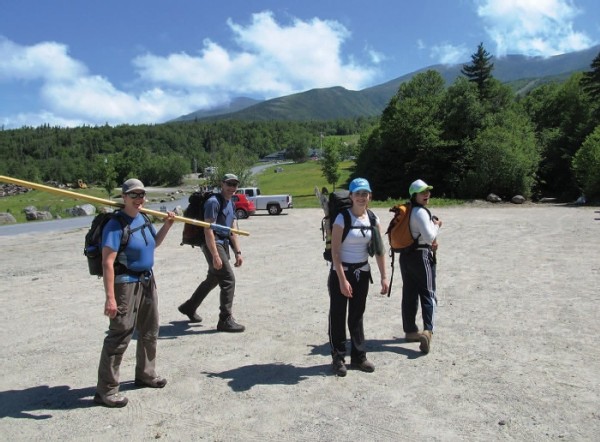
For decades, acid rain was one of the biggest problems affecting northern forests, the focus of extensive research and advocacy in the latter decades of the twentieth century. The fact that acid rain has faded from the headlines offers quiet evidence that policy can be successful in reducing pollution. The Clean Air Act Amendments of 1990, which mandated changes to coal-fired power plants and other industries, decreased concentrations of nitrogen, sulfur, and metals such as lead, cadmium, and mercury in the air. On the ground, forests and lakes continue to recover at varying rates.
Air pollution was particularly harsh at high elevations, including the Appalachian Mountains where entire forests were damaged as rain, snow, and fog deposited heavy metals on evergreen needles. Researchers from the University of Washington and Clarkson University, led by James Gawel, revisited an affected stretch of mountains from Whiteface Mountain in New York to Mount Jefferson in New Hampshire, that Gawel had studied in the early 1990s. They found that the forest looked much healthier, with fewer dead and visibly damaged red spruce trees. Metal concentrations in soils, lichens, and foliage were “muted” compared to the 1990s.
However, the researchers could still detect metal stress in spruce needles, as indicated by concentrations of the protein phytochelatin. The researchers attributed this stress to continued air pollution and/or metal accumulation in the soils. “The change in red spruce health in the northern Appalachian Mountains is likely attributable to a combination of decreases in the atmospheric deposition of pollutants (acid and metals) and possibly increasing average temperatures over the last several decades,” they wrote in the journal Water, Air & Soil Pollution. “Thus, continued monitoring is warranted as climate change may increase metal uptake and metal stress while also increasing other environmental stressors for high-elevation forests in the Northeastern U.S.”
Meanwhile, researchers from the University of Vermont, writing in the Journal of Paleolimnology, documented how mountain lakes continue to recover from decades of acid rain. Their analysis of water chemistry data collected by the Vermont Department of Environmental Conservation from Beaver Pond in the town of Holland showed decreasing acidity, a trend reflected by the historical record of algae preserved in layers of sediment at the bottom of the pond. They documented a shift in the algal community in response to pollution in the mid-twentieth century toward more acid-tolerant diatoms. Since 1990, acid-sensitive diatoms such as Discostella stelligera have returned, along with new species not common historically. Water quality has improved, wrote the researchers, although “the algae are not on a trajectory to return to pre-acidification community structure,” due to both the legacy of acid rain and current effects of climate change. Beaver Pond shows that pollution can have long-lasting impacts on lakes that ripple through entire food webs.

